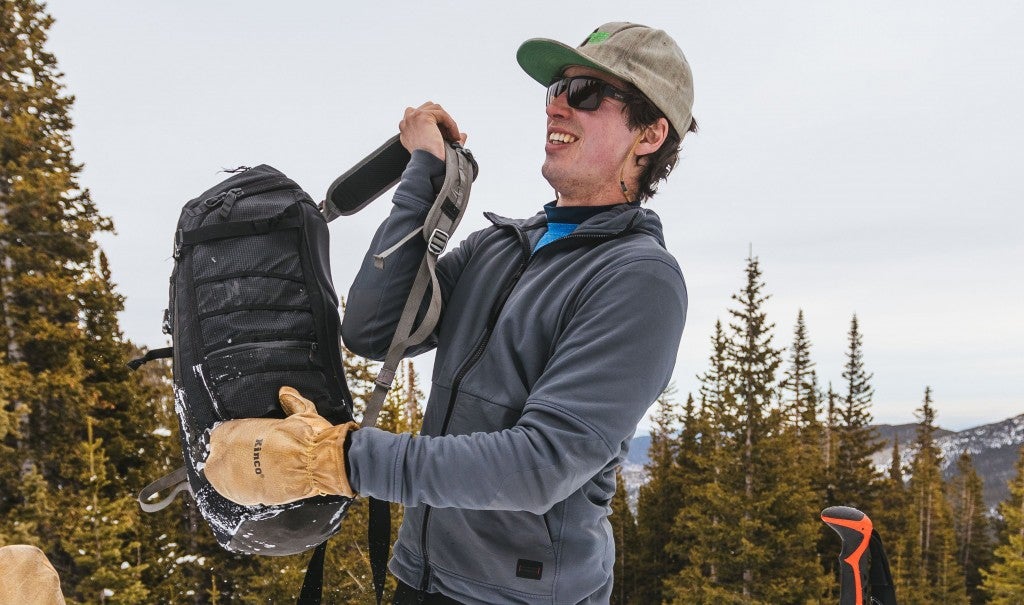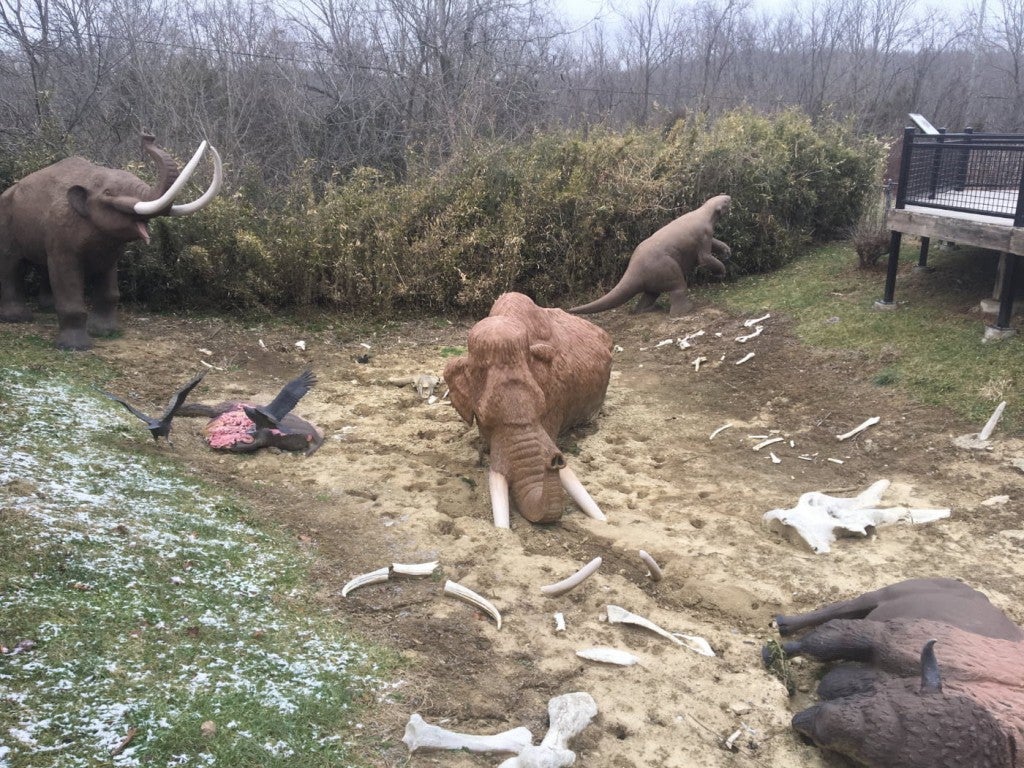The Great Smoky Mountains are famous for the ancient, fog covered mountains looming over North Carolina and Tennessee. But if you look much closer in the forest, from the teensy ground cover wildflowers to the individual leaves that cover the area, you’ll find a natural apothecary of healing herbs.
More than 1,500 types of flowering plants make a home out of the verdant Great Smoky Mountains, quite a few of which can be used as healing herbs. Those not keen to naturalist medicine might not even recognize that much of the forest they camp, hike and play in can serve as resources for soothing pain to easing stress.
While communing with nature is encouraged, it’s important to be mindful of your impact on the environment. Never over-harvest an already depleted plant. Also make sure to follow all rules of the national park, and refrain from gathering plants that are protected.
How to Find Healing Herbs In The Great Smoky Mountains
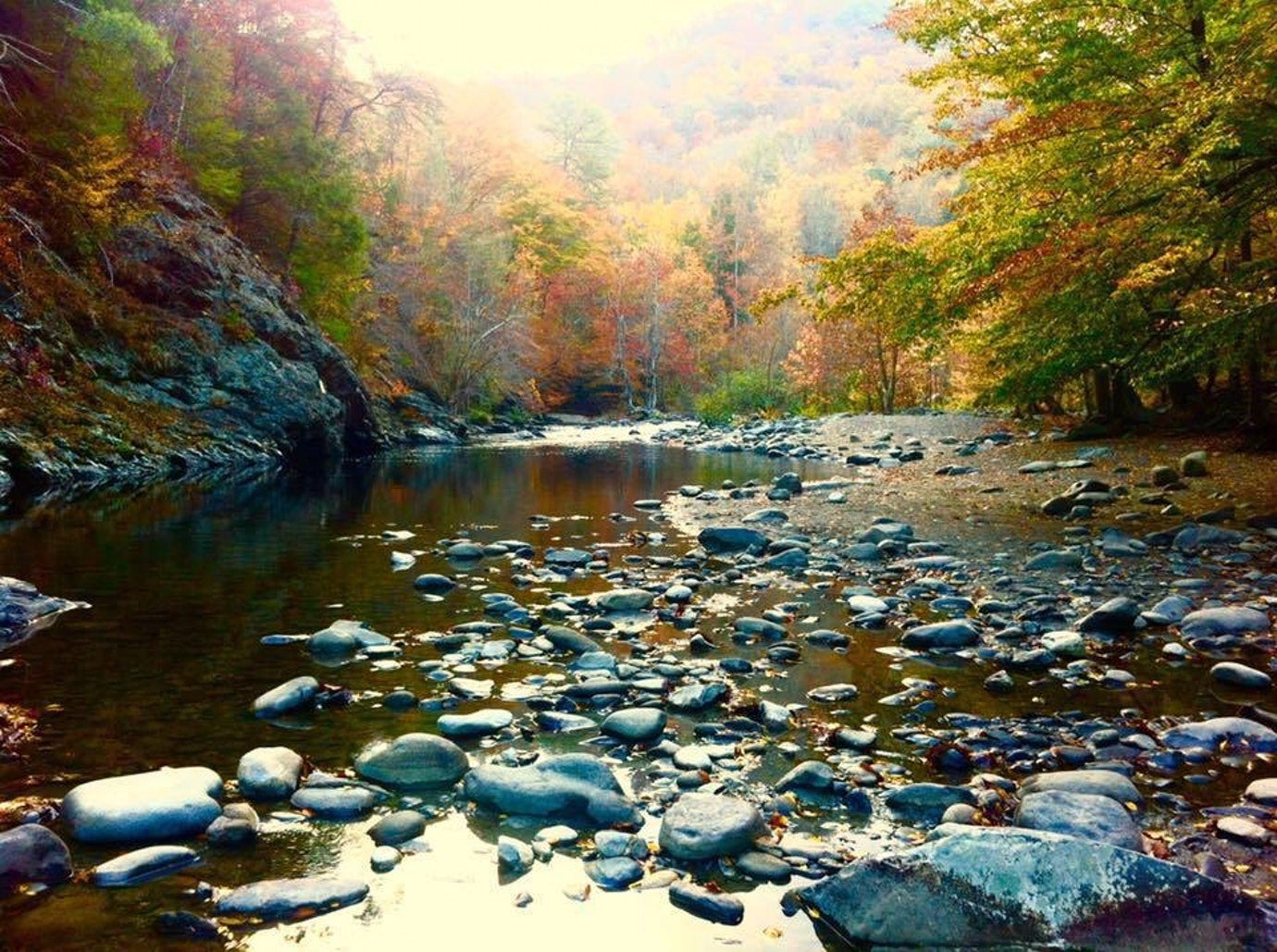
Image from The Dyrt camper Buck R.
The Smokies are world renowned for the plant diversity in the park—so much so that the United Nations declared the region a World Heritage Site. So many of these plants are forces of health that can help common illnesses when applied as salves, tinctures, and teas. The books below have served as an excellent reference for plants and their medicinal traits in the southern Appalachian region.
- Medicinal Plants of the Southern Appalachians by Patricia Kyritsi Howell
- The Modern Herbal Dispensatory by Thomas Easley and Steven Horne
- Southern Folk Medicine by Phyllis Light
- The Practical Herbal Medicine Handbook from Althea Press
The plants below are found in many areas across the forest, and plenty have a campsite or two nearby their natural growth range. We’ve collected 10 healingAlways consult with a doctor before ingesting or applying any herbal medicine. These plants are potent, and can negatively interact or interfere with prescribed medicines.
1. American Witch Hazel
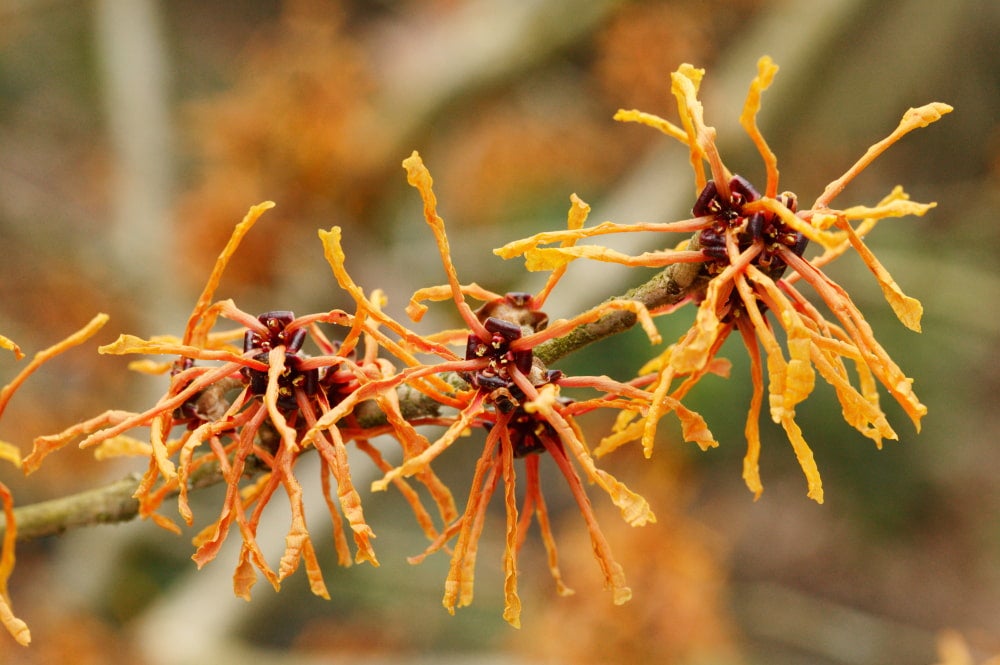
Hamamelis virginiana
American Witch Hazel blossoms in an explosion of yellow. These blooms are persistent, lasting until the very end of fall into December, and beacon in the winter season. Come spring, Witch Hazel’s deeply veined leaves will turn a lush green.
The bright flora is admired for its aesthetic beauty, but traditionally American Witch Hazel was used as a topical remedy for skin ailments. The tannins in witch hazel bark and leaves (the same tannins found in most red wine) are believed to heal broken skin, fight bacteria, and relieve swelling. Commercially, extracts of witch hazel are often used as an astringent in acne and facial cleaning products.
Forage for Witch Hazel Near: #27 Lower Jake’s Gap
Witch Hazel is prolific throughout the Great Smoky Mountains, particularly the perimeter of the area. You can be sure to find some at backcountry campsite #27 Lower Jake’s Gap, as well as many other campgrounds with conditions that offer plenty of sunlight, but moderate moisture levels.
“There is a water source near by for filtering water, and the sites are spread out enough you won’t be on top of other campers. There are also bear cables to hang your food for you, which is great!” —The Dyrt camper Katie W.
2. St. John’s Wort
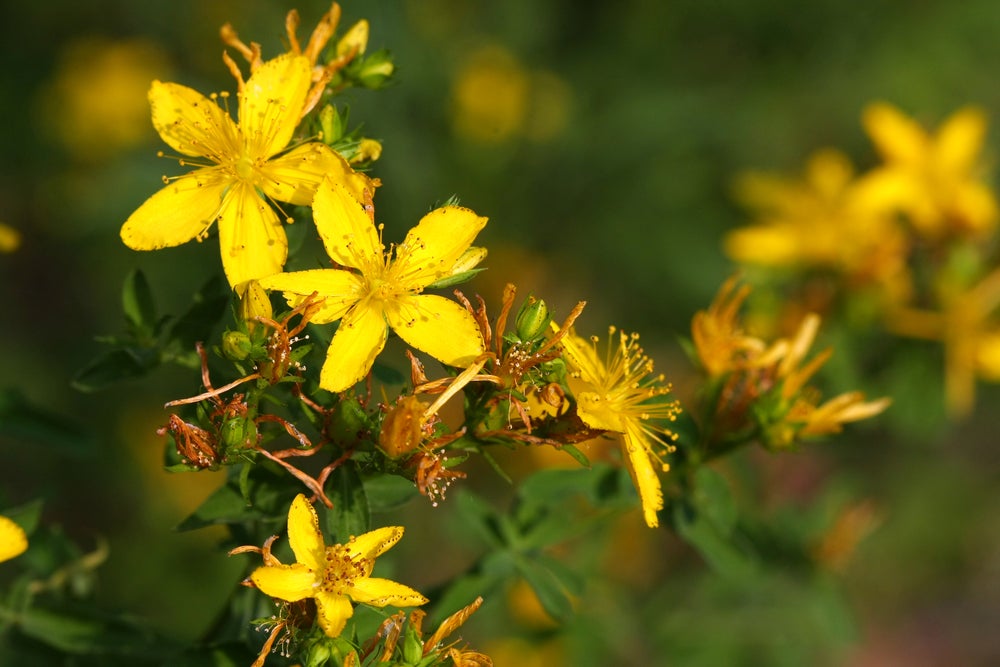
Hypericum hypericoides
St. Johns Wort is a rare wildflower that speckles the western border of the Great Smoky Mountains.
As far as healing herbs go, dried St. Johns Wort blooms are ideal as a mild sedative. The ancient Greeks used the flower as a compound to help the healing of battle wounds, and it has also had a long history as a talisman that wards off evil. Do not use St. Johns Wort in a tea or any other form if you’re taking medications, the flower could interfere with prescription medicines.
Find St. John’s Wort Near: #72 Gunter Branch
Backcountry campsite #72 Gunter Branch is one of the few places in the national park with conditions that allow St. John’s Wort to flourish. The campsite sits waterside to the Tuckaseegee River, and its well-drained soil is ideal for St. John’s Wort growth. As with any backcountry campsite, campers should pack throughly, including food, water, shelter, and toiletries that will last the duration of the trip.
Be the first to share your experience at #72 Gunter Branch on The Dyrt and earn your Pioneer Badge!
3. Wood Nettle
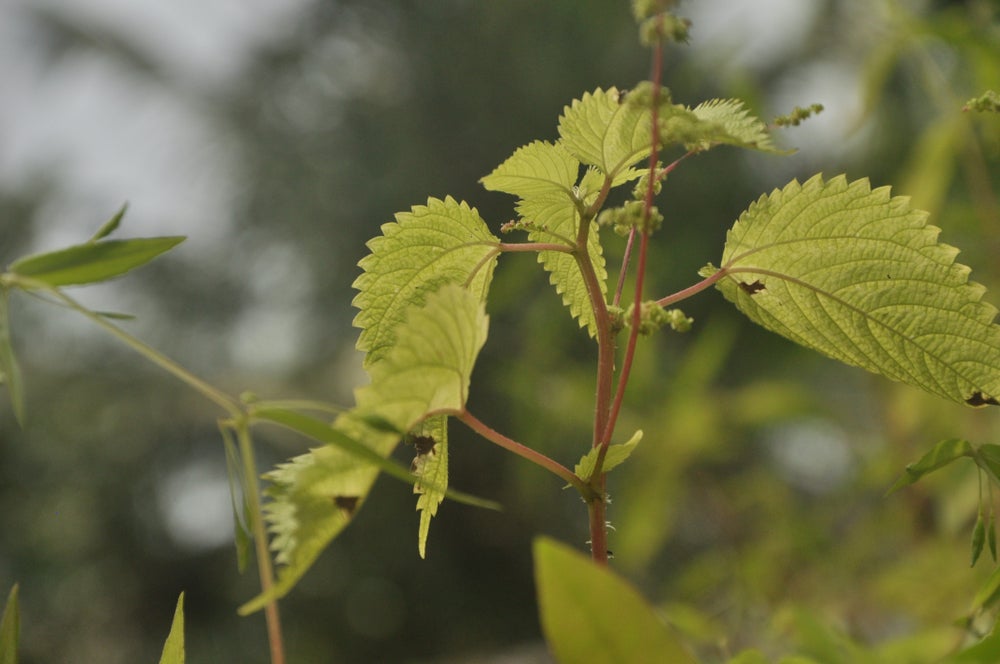
Laportea canadensis
Creeks and mountain streams abound at the Great Smoky Mountains National Park, and that’s exactly why Wood Nettle has so enthusiastically populated the park. Nettle grows bankside to these water sources.
Sometimes healing and harm exist in the same plant. Nettle’s hairy leaves produce formic acid and histamine that will leave a rash and irritate any exposed skin. But once you’ve safely (with gloved hands) gathered these leaves, you can make a tea or tincture out of the leaves. Nettle is one of the super healing herbs that are great for daily use, the properties in the nettle leaves and root promote healthy blood flow, joints, and kidney function.
Pluck Wood Nettle Near: #39 Pretty Hollow
If you can see a water source in the Great Smoky Mountains National Park, then you’re bound to find nettle. On the eastern edge of the park, backcountry site #39 Pretty Hollow sits creekside and creates the perfect environment for nettle to thrive. This campsite is accessible through the Pretty Hollow Gap Trail.
“[The campsite] has fire pits and places to hang your gear. It’s a great site down in the valley and the trail is beautiful getting there.” —The Dyrt camper Stephanie R.
4. Thin Leaf Mountain Mint
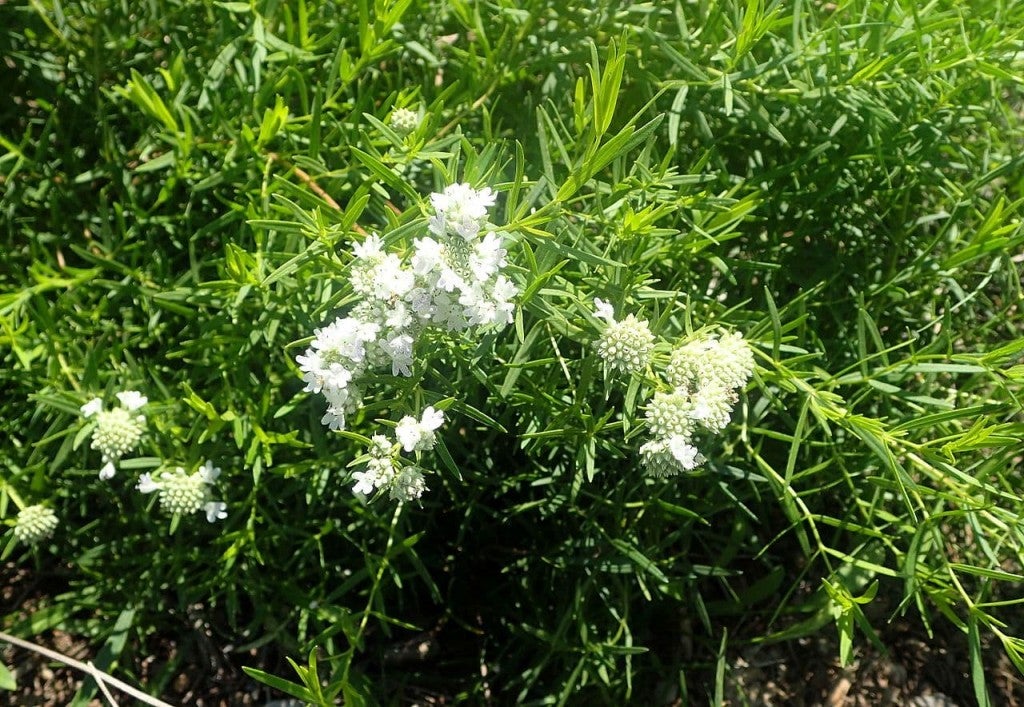
Pycnanthemum tenuifolium. Image from Krzysztof Ziarnek—CC BY-SA 4.0
Forgot the toothpaste? Pick a mint leaf and give it a chew. While it won’t do much for plaque, it’ll help freshen your breath and generate saliva, which can help break down food molecules. There are also a host of other benefits to masticating on some mint. The little leaf is a digestive aid and is packed with vitamins A, C, B6, folate, and riboflavin.
Discover Mountain Mint Near: Mollie’s Ridge
Mollie’s Ridge is located in the western portion of the Great Smoky Mountains National Park, and sits along the Appalachian Trail. The ridge is a primitive shelter, meaning it’s basically an open roofed structure, with two levels of platforms for campers looking for a rest. Mountain mint is one of the hardier healing herbs, and grows in the forested wilderness around Mollie’s Ridge Shelter.
“I rounded a turn and the trail turned rocky. Then the brush disappeared and the view of the side of the mountain was breathtaking. A little bit further and I took the side trail to the Shuckstack fire tower.” —The Dyrt camper Art S.
5. Pink Turtlehead
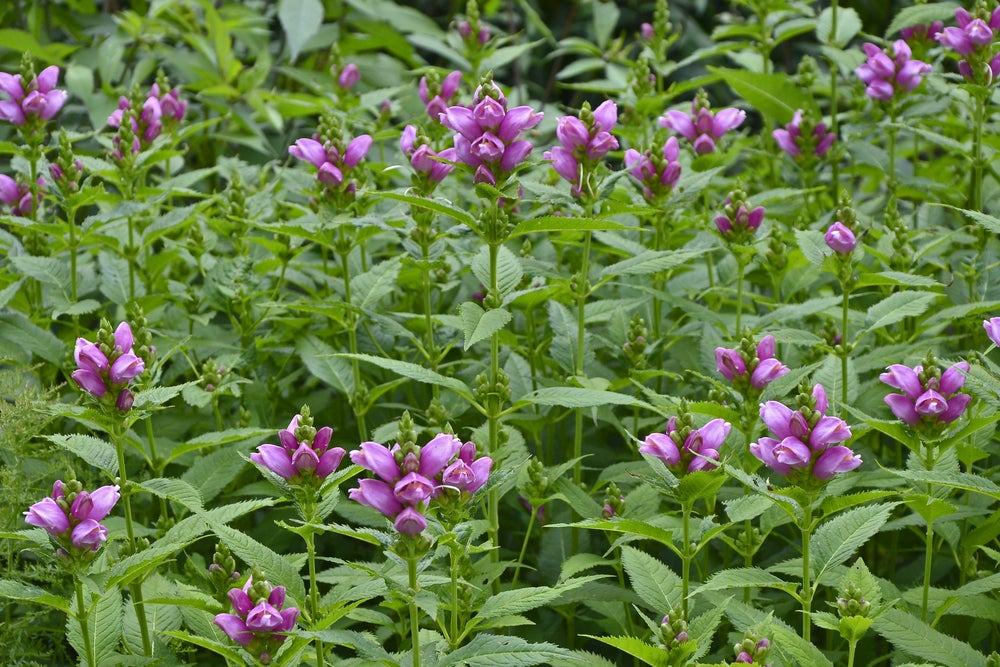
Chelone lyonii
Pink Turtlehead is named for the convergence of its two petals that resemble a turtle’s head. This perennial flower has a history of treating intestinal issues like bloating and indigestion, and can also be used as a laxative. The aerial part of the bloom, when collected in the spring, can be made into a salve or tincture.
Pink Turtleheads are healing herbs that prefer moist soil, and also tend to enjoy the company of jewelweed and cardinal flower.
Grab Some Pink Turtlehead Near: Mount Leconte Shelter
Even though Mount Leconte Shelter is a backcountry structure that will take hikers to aerial heights of the Great Smoky Mountains, it’s still a perfect spot for shade. The lingering fog and cooling temperatures make the terrain around the shelter ideal for Pink Turtlehead growth.
Keep in mind that you’ll need a backcountry permit from the Great Smoky Mountains National Park to stay at the shelter.
“Leconte lodge is on top of mountain thats only accessible after an all day hike. Great cabin lodging at the top. If you’re lucky you get a great view of the Smoky Mountains but it is often cloudy.” —The Dyrt camper Ethan K.
6. Stoneroot
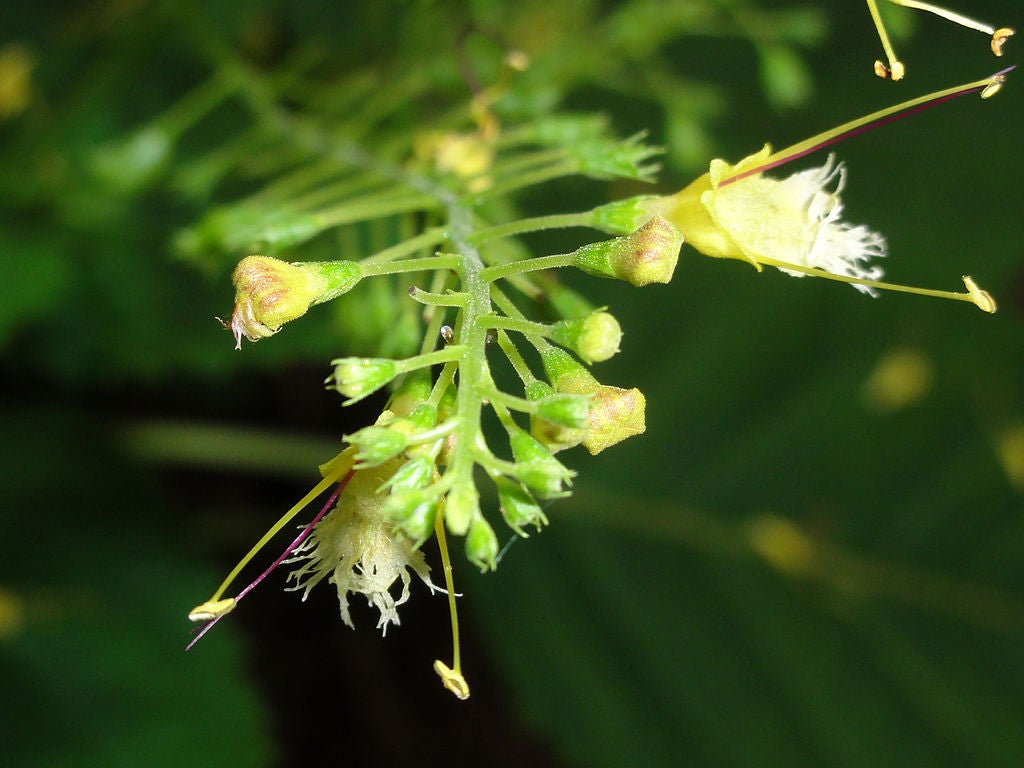
Collinsonia canadensis. Image from R.A. Nonenmacher—CC BY-SA 4.0
Tiny yellow blooms erupt from the stalk of Stoneroot in July to August. The two- to four-foot plant dons serrated leaves, a lovely lemon scent, and is most commonly found in cool, shaded areas. Stoneroot can solve urinary problems as well as act as a mild heart stimulant. When harvesting these healing herbs, use the whole plant, from root to bloom, to dry out and create tinctures or decoctions.
Once the root is exposed, the namesake becomes apparent for the root’s density and hardness.
Forage for Stoneroot Near: #16 Scott Gap
Backcountry Site #16 Scott Gap is located near the western edge of the park at the intersection of Hannah Mountain and Rabbit Creek Trail. The primitive site can support up to 10 campers and is surrounded by Stoneroot growth. Remember to secure your backcountry camping permit for all primitive camping trips in the Great Smoky Mountains National Park.
Be the first to share your experience at #16 Scott Gap with The Dyrt and earn your Pioneer Badge!
7. Sweet Gum
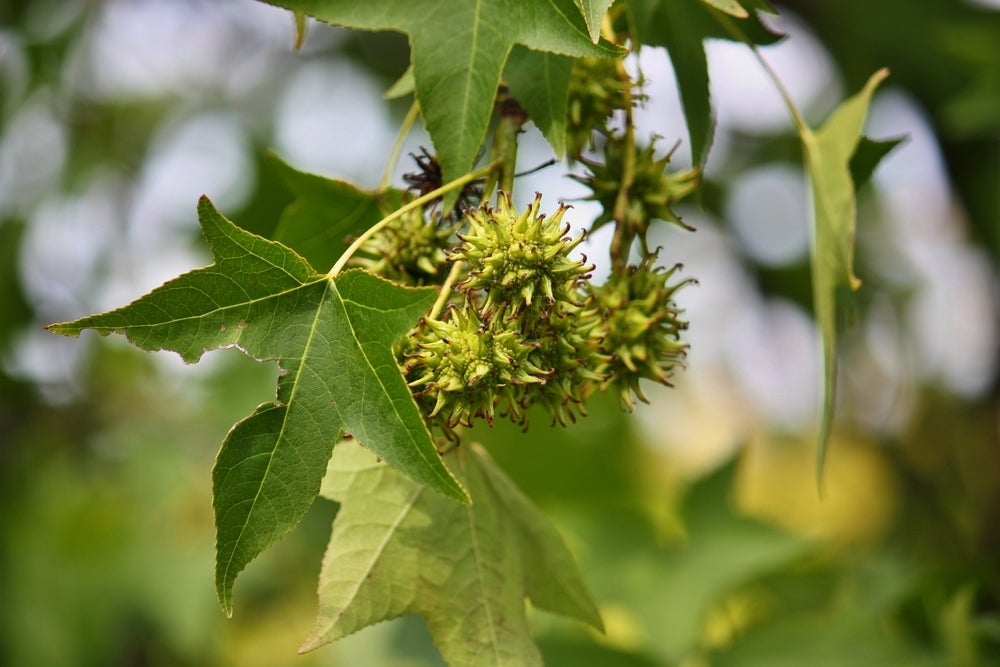
Liquidambar styraciflua
The Sweet Gum Tree is a star in the Southern states. Not only for its pointed, star-shaped leaves, but also because it’s one of the first trees to transition into golden amber fall colors. If you’ve ever come across some brown or green spiky balls on the ground, it’s not an alien invasion, more than likely you’re standing in the vicinity of a Sweet Gum tree and looking at its fallen fruit.
The name comes from the sweet, sap-like resin that from the bark. This sweet gum is hard to come by on the commercial market, but if you can gather some directly from the tree, it’s a great healing herb used for chest congestion and relieving sore throats.
Pick Sweet Gum Near: #93 Twentymile Creek
The grand Sweet Gum tree favors a wet environment, which means it has found a perfect home at backcountry site #93 Twentymile Creek. The campsite is situated in the Southwest curve of the park, upon both the Twenty Mile Trail and Twenty Mile Creek. You’re sure to find plenty of Sweet Gum trees in this densely forested campsite.
Be the first to share your experience at #93 Twentymile Creek with The Dyrt and earn your Pioneer Badge!
8. Black Walnut
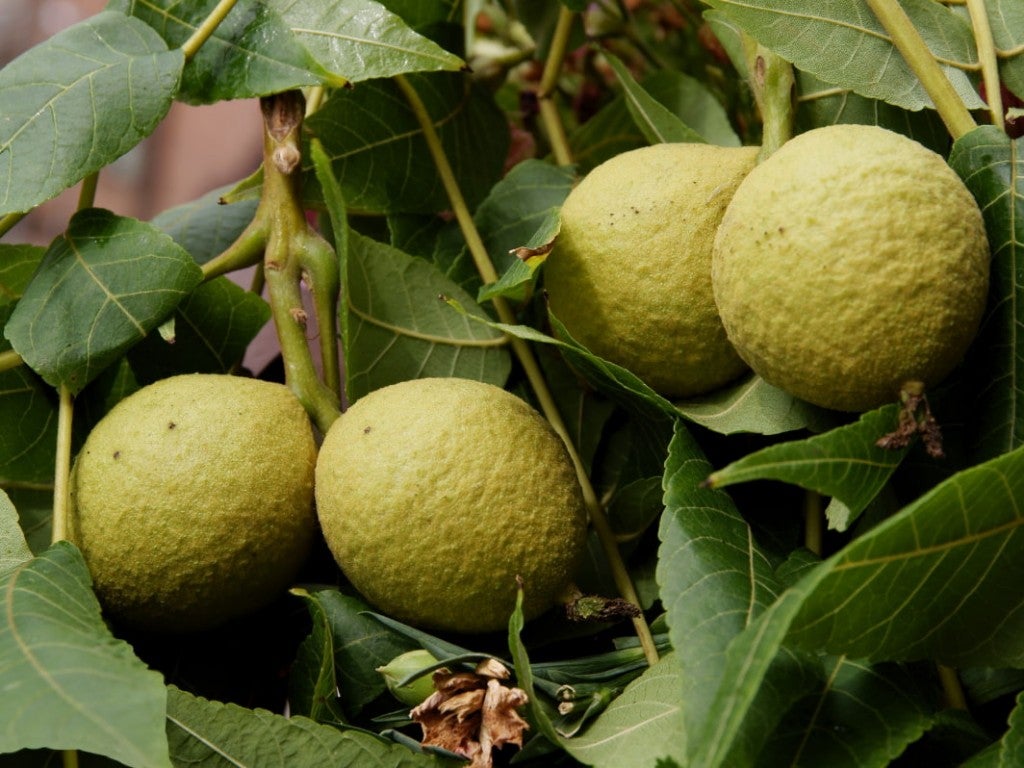
Juglans nigra
Black Walnut is a common tree throughout the Great Smoky Mountains National Park region. While the tree has fist-sized green fruits, unlike many other healing herbs, the leaves and bark house most of the medicinal qualities. In large doses, Black Walnut tincture and decoction is a laxative. In smaller, daily doses, it’s a blood purifier. As a salve made from fresh or dried leaves, Black Walnut can treat cradle cap and fungal infections.
Benefit From Black Walnuts Near: #86 Proctor
Well over a century ago, the campsite that is now called #86 Proctor was a bustling town profiting from the booming limber industry. But today the wilderness has dominated and reverted Proctor back into a peaceful forest, thick with Black Walnut trees. The campsite resides on Hazel Creek Trail and in close proximity to Hazel Creek.
“This backcountry site is nice with easy access by boat.” —The Dyrt camper Cal L.
9. Sweet Joe-Pye-Weed
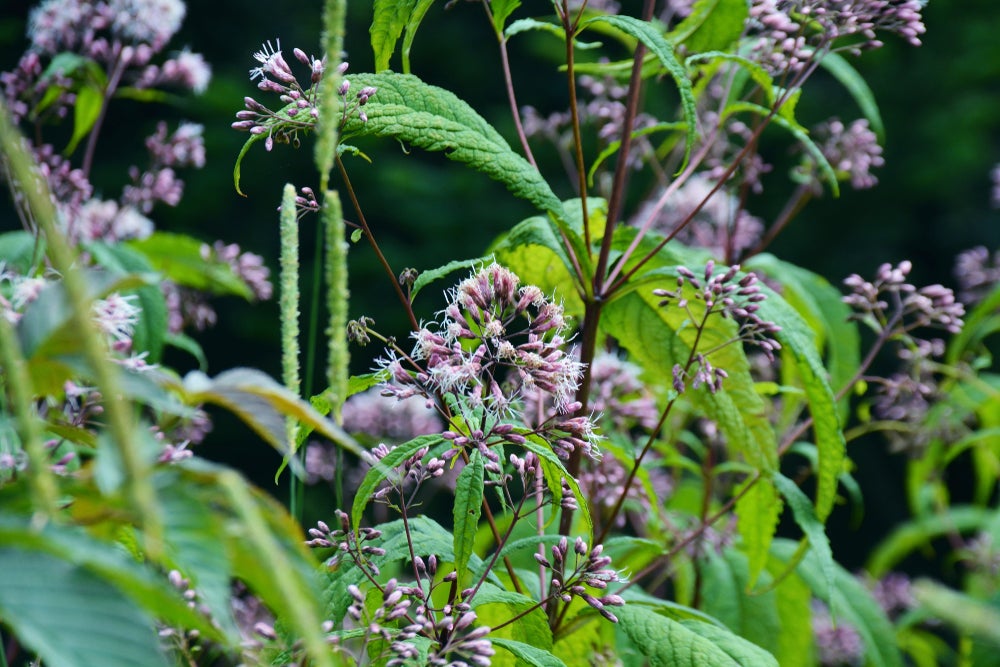
Eupatorium purpureum
Sweet Joe-Pye Weed is a tall plant, sometimes reaching 14 feet, with a halo of eye catching purple blossoms on its head. The roots and leaves of the plant relieve a host of urinary tract issues, as well as reduce fever and rheumatic pain. Whether you’re making a tincture, decoction, or tea from these healing herbs, make sure to add a generous dose of honey or sugar. Joe-Pye Weed is notoriously bitter.
This is one of the healing herbs that prefers a warm head and wet feet. Meaning it prefers soil near a water source, but full sun and open spaces above.
Pluck Sweet Joe-Pye Weed Near: #12 Forge Creek
Forge Creek campsite is along the Gregory Ridge Trail and smack dab between two waterway convergences, Forge Creek and Brier Lick Branch, as well as Forge Creek and Mud Gap Branch. All these streamways make for a plethora of Joe-Pye Weed in the area. This is a backcountry campsite, so little to no amenities will be available. Make sure to pack all necessities, from food and water to toiletries and shelter, for the duration of your trip.
Be the first to share your experience at #12 Forge Creek with The Dyrt and earn your Pioneer Badge!
10. Striped Pipsissewa
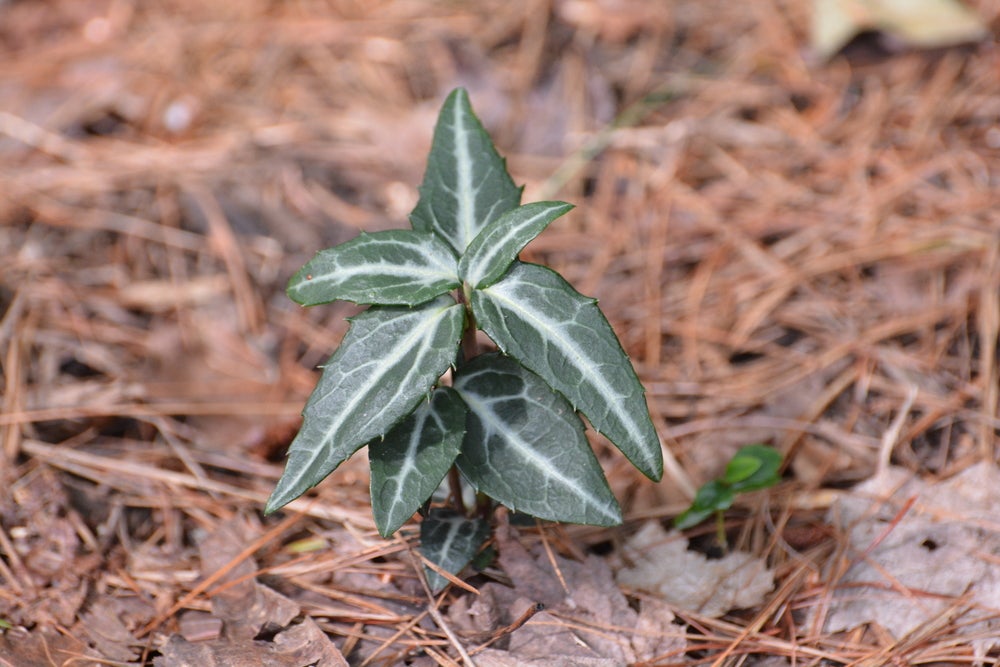
Chimaphila maculata
Striped Pipsissewa is a pipsqueak of a flower, but packs power more than other healing herbs. At only three to four inches tall, this humble white flower hangs its head, but its namesake striped leaf has a long history of remedy. The Cherokee used it as a healing herb for many ailments, from rheumatism to fevers. During the Civil War, doctors prescribed Striped Pipsissewa to soldiers to enliven a dragging spirit. No matter what you use it for, Pipsissewa leaves can be garbled at any time of year.
Find Striped Pipsissewa Near: #15 Rabbit Creek
Near the intersection of Rabbit Creek Trail and Rabbit Creek, you’ll find backcountry campsite #15 Rabbit Creek in the Great Smoky Mountains National Park. At this campsite, level tent sites and bear cables have been reported as available. Prior to any backcountry camping trip in the Smokies, obtain a permit from the national park.
Be the first to share your experience at #15 Rabbit Creek with The Dyrt and earn your Pioneer Badge!
Related Campgrounds:
- Greenbrier Campground
- Anchor Down RV Resort, Dandridge, TN
- Cosby TN Campgrounds, Great Smoky Mountains National Park, TN
- Deep Creek Campground, Great Smoky Mountains National Park, NC
Popular Articles:
Articles on The Dyrt Magazine may contain links to affiliate websites. The Dyrt receives an affiliate commission for any purchases made by using such links at no additional cost to you the consumer.


